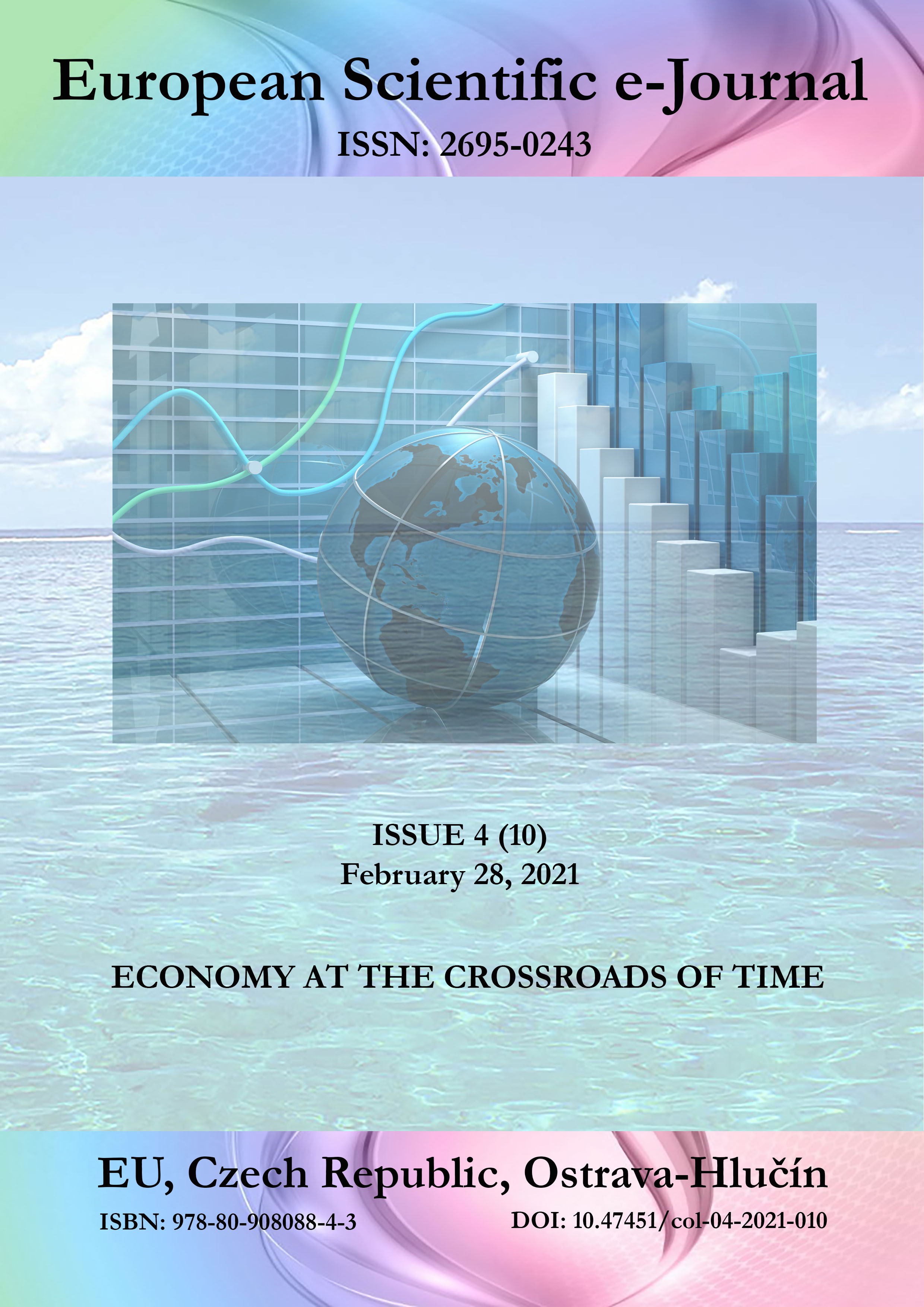Updating the Parameters of the Development of Effective Economic Thought to Motivate Society to Finance Innovative Activities
DOI:
https://doi.org/10.47451/ecn2021-02-004Keywords:
economic thought, innovation, innovation economy, economic efficiencyAbstract
The article considers the intermediate research results on determining the parameters of effective economic thought development to motivate society to finance the innovative activities of researchers in various fields of science. Historical, comparative, inductive, and deductive methods were used to solve the problems set in the study. The research uses the works of well-known scientists in the field of studying the development of society and innovative thought, for example, J.A. Schumpeter, Henry W. Chesbrough, Lars Schweizer, R. Rothwell, and others. It is concluded that at the present stage of the society’s evolution from industrial to informational, economic thought should form a fundamentally new financial approach to innovation, more complex and complex. It is necessary to develop a three-dimensional approach model to innovation. The study results can be used by specialists and researchers in the field of innovative economy, economic history and social economics.
Downloads
References
Casadesus-Massanell, R., & Feng, R. Zhu. (2013). Business model innovation and competitive imitation: The case of sponsor-based business models. Strategic Management, 34, 4, 464–482.
Chesbrough, H. W. (2003). Open Innovation: The New Imperative for Creating and Profiting from Technology. Harvard Business School Press.
Ivashchenko, N. P., Engovatova, A. A., Korostyleva, I. I. et al. (2016). Economics of Innovation. Moscow: Faculty of Economics of Lomonosov Moscow State University.
Komissarov, P. V. (2020). Relevance of the application of the theory of fuzzy sets in the calculation of the strategic security of a complex technical system. Actual Issues of Modern Science. European Scientific e-Journal, 6, 2, 54–63. Hlučín.
Rothwell, R. (2002). “Towards the Fifth-generation Innovation Process” in J. Henry and D. Mayle (Eds.). Managing Innovation and Change, 6, 115–135. London: Sage.
Sahut, J., Hikkerova, L., & Khalfallah, M. (2013). Business model and Performance of Firms. International Business Research, 6, 2, 64–76.
Schumpeter, J. A. (1934). Theory of economic development. Harvard University Press, Cambridge, MA.
Schweizer, L. (December 1, 2005). Concept and Evolution of Business Models. Journal of General Management, 31, 2, 37–56.
West, J., & Gallagher, S. (2006) Challenges of Open Innovation: The Paradox of Firm Investment. R&D Management, 36, 3, 315–328.
Published
Issue
Section
License
Copyright (c) 2025 European Scientific e-Journal

This work is licensed under a Creative Commons Attribution 4.0 International License.
The European Scientific e-Journal (ESEJ) is an open access journal. Articles are available free of charge as PDF files on the website of the European Institute for Innovation Development. PDF files can be previewed with Acrobat Reader from www.adobe.com.
All articles of the “Tuculart Student Scientific” are published under a Creative Commons Attribution 4.0 Generic (CC BY 4.0) International license.
According to the Creative Commons Attribution 4.0 Generic (CC BY 4.0) International license, the users are free to Share — copy and redistribute the material in any medium or format for any purpose, even commercially (the licensor cannot revoke these freedoms as long as you follow the license terms).
Under the following terms:
- Attribution — You must give appropriate credit, provide a link to the license, and indicate if changes were made. You may do so in any reasonable manner, but not in any way that suggests the licensor endorses you or your use.
- No additional restrictions — You may not apply legal terms or technological measures that legally restrict others from doing anything the license permits.


